What Causes Sponge Cakes to Be Domed or Sunken in the Middle and How to Avoid It
Sometimes it seems like there is nothing complicated about beating eggs with sugar and adding some flour to a mixture. However, baking a sponge cake is a true science. Slightly incorrect proportions of the ingredients, the smallest miscalculation, and the wrong oven temperature can completely ruin the sponge cakes you worked so hard to make.
We at 5-Minute Crafts tested how to bake the perfect sponge cake and explored the baking technique mistakes that can cause your cake to dome or fall in the middle.

We used 3 main ingredients to make a sponge cake: eggs, sugar, and flour. Over the course of the experiment, we slightly changed the proportions of the ingredients and the baking temperature in the oven.
Why does your sponge cake dome in the middle?
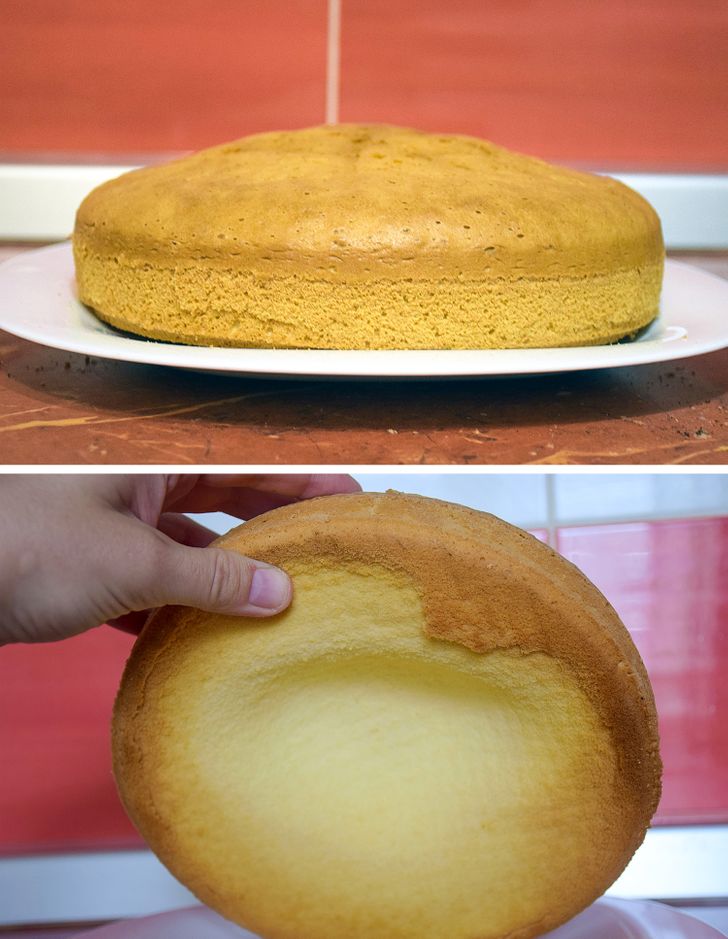
The cake will rise too high in the middle if you do the following.
- Oiling the walls of the pan. It will be difficult for the dough to “climb” up the walls of the pan causing the cake to dome in the middle.
- Placing the pan with the batter into an unheated oven.
- Setting a very high temperature (more than 350ºF). Since the edges of the cake are closer to the heat source, the middle of the cake will be the last part to cook through as the heat takes longer to reach that part of the cake.
- Incorrectly measured ingredients.
In this case, we used 6 eggs, 150 g of sugar, then added 200 g of sifted flour. We stirred it until it got smooth and put it in an unheated oven, setting the temperature to 390ºF. You can see the result in the picture above: the cake is obviously domed in the center.
Why does your sponge cake sink in the middle?
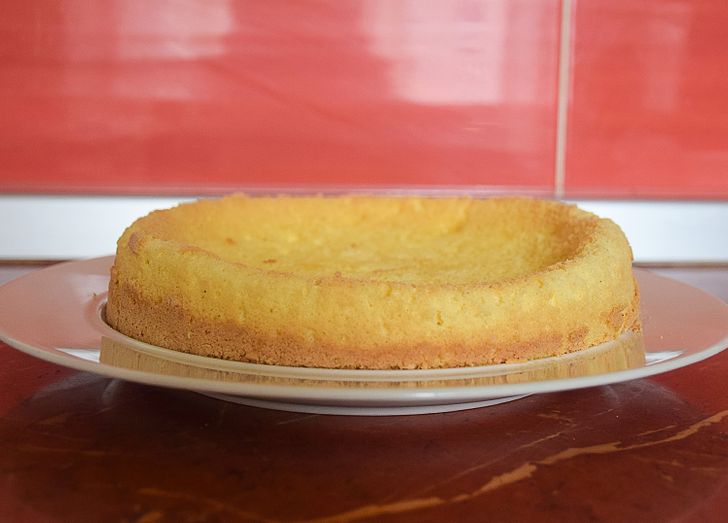
There are a few factors that can cause a cake to sink:
- Opening the oven door too early. Don’t open it during first 80% of the baking time.
- Incorrectly measured ingredients.
- Waiting too long before putting your cake into the oven.
We used 3 eggs, 130 g of sugar, and 130 g of sifted flour. We baked it for 25 minutes in an oven that was preheated to 356°F.
Why doesn’t your sponge cake rise?
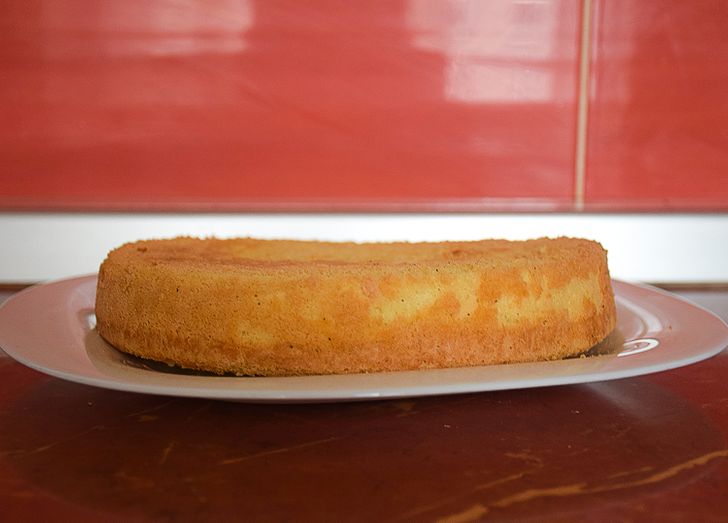
Your cake may not rise if you do the following:
- Beat the eggs with sugar too gently or too hard. In the first case, the cake will become too dense. In the second one, air bubbles will burst, preventing the cake from rising.
- Wrong baking pan size. The cakes will be fluffy, but flat, if you fill the baking pan with less batter than is necessary. To adjust the necessary amount of ingredients, you can use an online calculator. All you need to do is to enter the shape and size of the baking pan required in the recipe, input the dimensions of your pan, and you will get the conversion coefficient to calculate the recipe ingredients.
Here we made the second mistake of those mentioned: the cake turned out to be fluffy, but flat, because we used a pan with a diameter of 20 cm, and the amount of ingredients corresponded to a recipe for baking in a pan with a diameter of 18 cm. We used 4 eggs, 130 g of sugar, and 130 g of sifted flour. It baked in an oven that was preheated to 356°F.
How to bake the perfect sponge cake
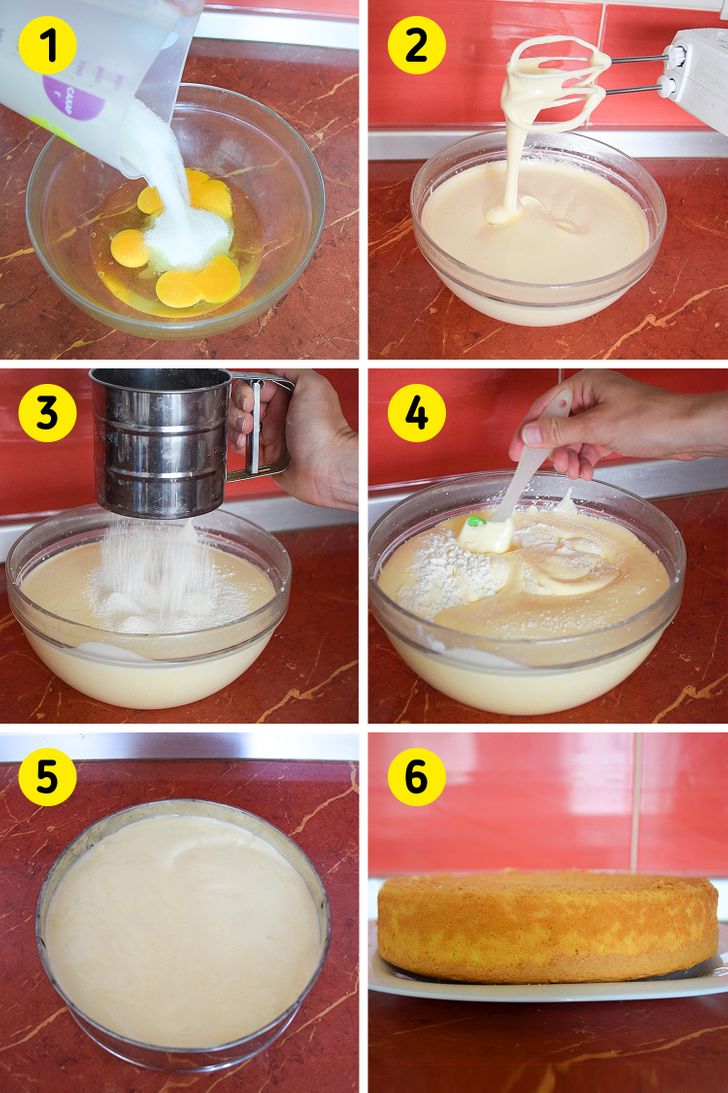
- Take 5 large eggs (from 55 g to 64.9 g), 150 g of sugar, and 150 g of flour. A pinch of vanilla can be added if desired.
- Beat the eggs with the sugar and vanilla (see photo 2). With an ordinary mixer, you will need to mix it for 10-15 minutes at maximum speed.
- Add the sifted flour to the eggs. You can use a special device to sift the flour (see photo 3).
- Gently stir the batter until smooth, lifting the flour from the bottom up.
- Fill the pan with batter. We used a pan with a diameter of 21 cm. If you have a different pan size, use the online calculator to convert the amount of the ingredients.
- Place the pan with the dough in an oven that is preheated to 350°F and bake for 40 minutes. Do not open the oven for the first 35 minutes so that the cake doesn’t fall in the middle. Use a toothpick to check whether the cake is ready or not. Insert it into the center of the cake: if it comes out clean and dry, the cake is ready. If there are pieces of dough on it, continue baking it for another 5-10 minutes.
Controlling oven temperature
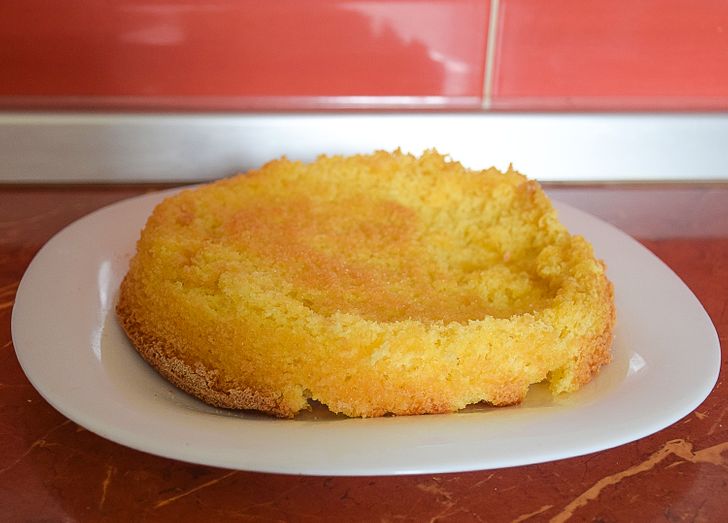
Each oven is different, so it may take a couple of attempts to find the right cooking temperature for your cake. The temperatures written around the dial are often inaccurate and can put you at risk of baking fails. Here is why we would recommend for you to get a special oven thermometer which will help you find out the true temperature of your oven and achieve your desired results.
We used the same ingredients as mentioned above (5 eggs, 150 g of sugar, and 150 g of flour), and exactly the same baking techniques, but the oven was preheated and the baking temperature was set to 302°F. As a result, the dough was not baked, but rather broiled.
Our recommendation is that you, first of all, consider the specifics of your oven.